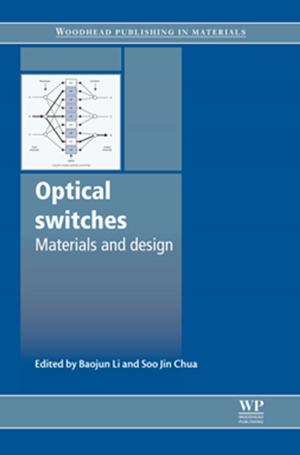III-Nitride Semiconductors: Electrical, Structural and Defects Properties
Nonfiction, Science & Nature, Science, Physics, Solid State Physics, Quantum Theory| Author: | ISBN: | 9780080534442 | |
| Publisher: | Elsevier Science | Publication: | December 6, 2000 |
| Imprint: | Elsevier Science | Language: | English |
| Author: | |
| ISBN: | 9780080534442 |
| Publisher: | Elsevier Science |
| Publication: | December 6, 2000 |
| Imprint: | Elsevier Science |
| Language: | English |
Research advances in III-nitride semiconductor materials and device have led to an exponential increase in activity directed towards electronic and optoelectronic applications. There is also great scientific interest in this class of materials because they appear to form the first semiconductor system in which extended defects do not severely affect the optical properties of devices. The volume consists of chapters written by a number of leading researchers in nitride materials and device technology with the emphasis on the dopants incorporations, impurities identifications, defects engineering, defects characterization, ion implantation, irradiation-induced defects, residual stress, structural defects and phonon confinement. This unique volume provides a comprehensive review and introduction of defects and structural properties of GaN and related compounds for newcomers to the field and stimulus to further advances for experienced researchers. Given the current level of interest and research activity directed towards nitride materials and devices, the publication of the volume is particularly timely. Early pioneering work by Pankove and co-workers in the 1970s yielded a metal-insulator-semiconductor GaN light-emitting diode (LED), but the difficulty of producing p-type GaN precluded much further effort. The current level of activity in nitride semiconductors was inspired largely by the results of Akasaki and co-workers and of Nakamura and co-workers in the late 1980s and early 1990s in the development of p-type doping in GaN and the demonstration of nitride-based LEDs at visible wavelengths. These advances were followed by the successful fabrication and commercialization of nitride blue laser diodes by Nakamura et al at Nichia. The chapters contained in this volume constitutes a mere sampling of the broad range of research on nitride semiconductor materials and defect issues currently being pursued in academic, government, and industrial laboratories worldwide.
Research advances in III-nitride semiconductor materials and device have led to an exponential increase in activity directed towards electronic and optoelectronic applications. There is also great scientific interest in this class of materials because they appear to form the first semiconductor system in which extended defects do not severely affect the optical properties of devices. The volume consists of chapters written by a number of leading researchers in nitride materials and device technology with the emphasis on the dopants incorporations, impurities identifications, defects engineering, defects characterization, ion implantation, irradiation-induced defects, residual stress, structural defects and phonon confinement. This unique volume provides a comprehensive review and introduction of defects and structural properties of GaN and related compounds for newcomers to the field and stimulus to further advances for experienced researchers. Given the current level of interest and research activity directed towards nitride materials and devices, the publication of the volume is particularly timely. Early pioneering work by Pankove and co-workers in the 1970s yielded a metal-insulator-semiconductor GaN light-emitting diode (LED), but the difficulty of producing p-type GaN precluded much further effort. The current level of activity in nitride semiconductors was inspired largely by the results of Akasaki and co-workers and of Nakamura and co-workers in the late 1980s and early 1990s in the development of p-type doping in GaN and the demonstration of nitride-based LEDs at visible wavelengths. These advances were followed by the successful fabrication and commercialization of nitride blue laser diodes by Nakamura et al at Nichia. The chapters contained in this volume constitutes a mere sampling of the broad range of research on nitride semiconductor materials and defect issues currently being pursued in academic, government, and industrial laboratories worldwide.















